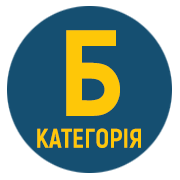FEATURES OF THE INDIVIDUAL IMAGE OF STUDENT YOUTH THROUGH THE «I-CONCEPT» PRISM
Keywords:
image, «I-concept», notion, individual image, student youth, self-assessment.Abstract
The scientific article is devoted to the research of the peculiarities of the individual image of student youth through the prism of «I-concept». The concept of image, its contents, types and characteristics are analyzed. It was stated that foreign studies are carried out in two main directions: 1) the creation of practical methods of forming an image, providing advice and recommendations for the formation of a positive image of a person, a company or a product (K. Boulding, M. Woodcock, D. James, etc.); 2) fundamental theoretical researches of psychological mechanisms of image formation, creation of psychodiagnostic methods for measuring the level of its formation (B. Zeigarnyk, O. Connor, etc.). At the conceptual level it was found out that foreign intelligence examined and defined image as an artificially created media of information (B. Bruce), self-promotion (P. Bird), individuality as a set of personal qualities (R. Denton), a sign structure (Zh.-P. Bodouan, G. Wilson, K. McLaughlin). The main domestic theoretical and methodological approaches to this concept are considered, among them: L. Kochubei, T. Lyapina, G. Pocheptsov, A. Rotovskyi. Self-assessment is defined as the most important part of «I-concept», a leading factor that determines the behavior of the individual. The structural model of the image of police employee based on internal and external subjective assessments of the image is analyzed. Image is considered as a rational-emotional perception of an object (organization, person, subject) or phenomenon by a definite group of people on the basis of the purposeful or involuntarily formed image in their psyche; as a reflection in the human psyche in the form of an image of certain characteristics of an object or phenomenon. The meaning of the image for the law enforcement activity is revealed in its relation to the social setting, value stereotype or certain symbol.
References
Сеченов И. М. Элементы мысли. Избр. произвед.: физиология и психология. М.: Наука, 1952. Т. 1. С. 272–427.
URL: http://www.studmed.ru/kikot-vya-stolyarenko-am-yuridicheskaya-pedagogika_48385e6602e.html
Нефедова И., Власова Е. Я и мой имидж. М.: Яуза; ЭКСМО, 1997. 204 с.
Орлов Ю. М. Восхождение к индивидуальности: кн. для учителя. М.: Просвещение, 1991. 287 с.
Перелыгина Е. Б. Психология имиджа: учеб. пособие. М.: Аспект; Пресс, 2002. 223 с.
Феофанов О. А. Агрессия лжи. М.: Политиздт, 1987. 398 с.
Андрієнко О. Індивідуальне самовизначення в умовах демократії і феномен «мінімальних осіб». Гілея: науковий вісник. 2013. № 75. С. 234–236. URL: http://nbuv.gov.ua/UJRN/gileya_2013_75_100
Почепцов Г. Г. Паблик рилейшнз. М.: Центр, 2004. 336 с.
Маскалянова С. А. Формирование профессионального имиджа будущего социального педагога: дис. … канд. наук: 13.00.08. Елец, 2005. 203 с.
Бех І. Д. Вибрані наукові праці. Виховання особистості: в 2 т. Чернівці: Букрек, 2015. Т. 2. 2015. 640 с. (Школа майбутнього).
Гусак О. Г. Педагогічна технологія створення ситуацій успіху майбутнього вчителя у професійній підготовці: дис. ... канд. пед. наук: 13.00.04. Х., 2011. 185 с.
Бойко І. В. Основні критерії оцінки діяльності органів і підрозділів внутрішніх справ України. Правова інформатика. 2003. № 1. С. 9–22.
Воробйова І. В., Жданова І. В. Імідж та престиж професії правоохоронця. Комунікативна компетентність правників і їх звʼязки із громадськістю; за заг. ред. А. С. Токарської: зб. наук. статей. Львів, 2003. С. 45–47.
Подоляк Л. Г., Юрченко В. І. Психологія вищої школи: підручник. 2-е вид. К.: Каравела, 2008. 352 с.
Столбова В. В. Сутність іміджу міліції. Науковий вісник Київського національного університету внутрішніх справ. К., 2008. Вип. 5. С. 173–180.
Шепель В. М. Имиджелогия. Как нравиться людям. М.: Народное образование, 2002. 407 с.





